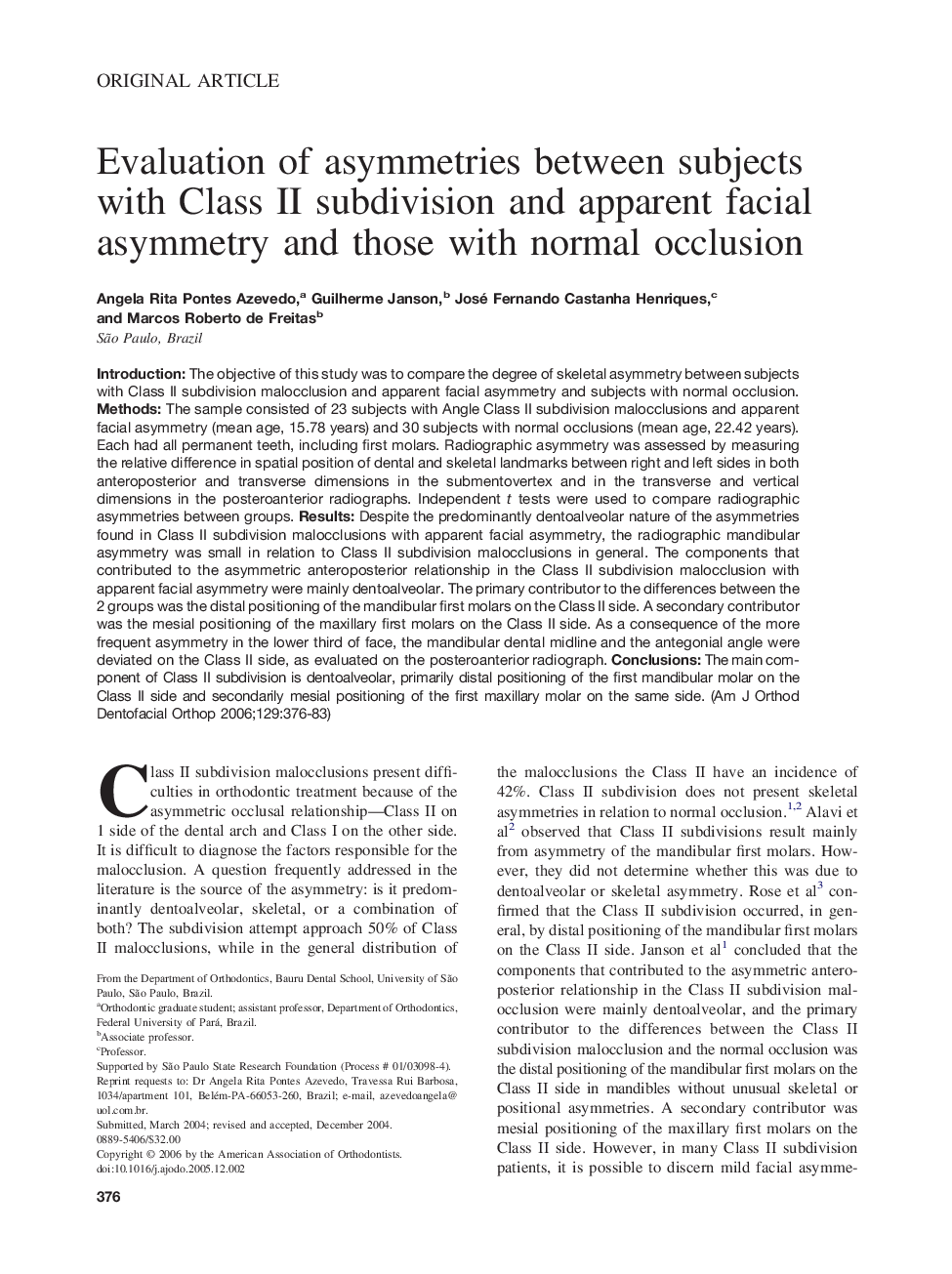| Article ID | Journal | Published Year | Pages | File Type |
|---|---|---|---|---|
| 3120113 | American Journal of Orthodontics and Dentofacial Orthopedics | 2006 | 8 Pages |
Introduction: The objective of this study was to compare the degree of skeletal asymmetry between subjects with Class II subdivision malocclusion and apparent facial asymmetry and subjects with normal occlusion. Methods: The sample consisted of 23 subjects with Angle Class II subdivision malocclusions and apparent facial asymmetry (mean age, 15.78 years) and 30 subjects with normal occlusions (mean age, 22.42 years). Each had all permanent teeth, including first molars. Radiographic asymmetry was assessed by measuring the relative difference in spatial position of dental and skeletal landmarks between right and left sides in both anteroposterior and transverse dimensions in the submentovertex and in the transverse and vertical dimensions in the posteroanterior radiographs. Independent t tests were used to compare radiographic asymmetries between groups. Results: Despite the predominantly dentoalveolar nature of the asymmetries found in Class II subdivision malocclusions with apparent facial asymmetry, the radiographic mandibular asymmetry was small in relation to Class II subdivision malocclusions in general. The components that contributed to the asymmetric anteroposterior relationship in the Class II subdivision malocclusion with apparent facial asymmetry were mainly dentoalveolar. The primary contributor to the differences between the 2 groups was the distal positioning of the mandibular first molars on the Class II side. A secondary contributor was the mesial positioning of the maxillary first molars on the Class II side. As a consequence of the more frequent asymmetry in the lower third of face, the mandibular dental midline and the antegonial angle were deviated on the Class II side, as evaluated on the posteroanterior radiograph. Conclusions: The main component of Class II subdivision is dentoalveolar, primarily distal positioning of the first mandibular molar on the Class II side and secondarily mesial positioning of the first maxillary molar on the same side.
